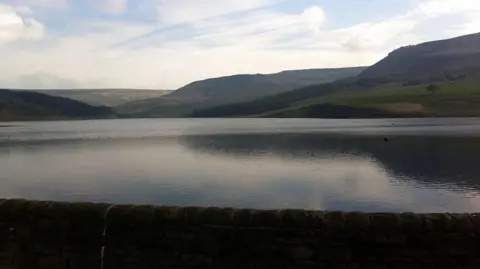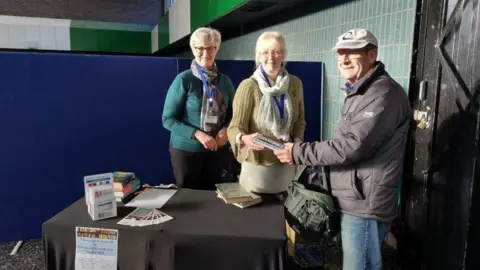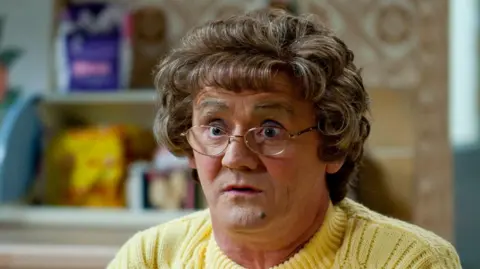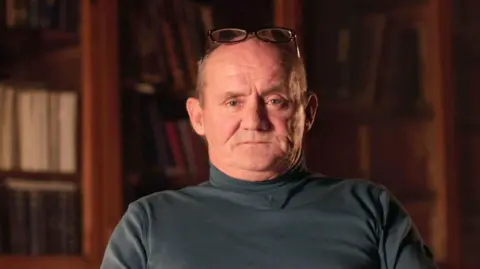Today, our Cultural China tour takes us to Wuhan, where we find the Panlongcheng site, the most significant and richest archaeological site from the early Shang Dynasty, located in the Yangtze River basin.
Panlongcheng is an archaeological site that has been preserved for over 300 years, proving that the Xia and Shang Dynasties extended their influence into the Yangtze River region. It serves as a historical testament to the co-development of Yangtze and Yellow River civilizations during the formation of Huaxia culture. Walking through this site, visitors can sense a strong archaeological ambiance, as if the past 3,500 years are being directly connected.
The site isn’t adorned with manicured lawns or artificial gardens; instead, visitors are immersed in a raw, primeval atmosphere. I asked Bian Xiaoyan, a reporter from CCTV, why the park maintains such a wild environment. She explained, “This is because, 3,500 years ago, the ancestors of Panlongcheng thrived in a similar natural landscape, filled with extensive evergreen and deciduous forests.”
The archaeological park has made a significant effort to retain its original ecological scenery, where sunlight glimmers on the reeds, and people stroll along the compacted earth walls of the city. This scene evokes a sense of ancient history while converging with ongoing archaeological discoveries in the area.
Every museum possesses its treasures, and for the Panlongcheng site museum, that treasure is the land itself. Wan Lin, the museum’s director, shared insights about the former site of the palace where the rulers made decisions and resided. This is the earliest example in China of a “front hall and back bedroom” architectural layout, predating the ruins of Yinxu by two to three centuries. He recounted how in 1974 and 1976, faculty and students from Peking University excavated this site, revealing Shang Dynasty relics for the first time.
“The excavation grid measures 5 by 5 meters,” Wan Lin elaborated. “They dug down along these gridlines, and soon, the remains began to unfold before the archaeologists.”
One of the biggest surprises lies within the museum, where visitors can stand face-to-face with the very moment the palace was discovered. A hand-drawn cross-section illustrates the moment it was uncovered, detailing five distinct soil layers. In the fourth quadrant, at coordinates 11 and 19, it captures how archaeologists employed grid digging techniques. This page belongs to the excavation journal of lead archaeologist Yu Weichao. It documents the exact day when the No. 1 palace of Panlongcheng was discovered, with elegant characters narrating new discoveries each day.
Wan Lin noted, “As we gradually uncovered pillar bases, excitement surged among the archaeological team. Some even found it difficult to sleep at night, grabbing flashlights to rush back to the palace area. Everyone viewed the excavation of Panlongcheng as a challenging poem of archaeology.”
Tools like measuring tapes and compasses, though simple, recreate the living conditions of archaeologists in the 1970s and 80s. Despite their rudimentary circumstances, they uncovered palaces, city walls, and noble tombs—evidence that both the Yangtze and Yellow River civilizations share a common cradle of Chinese culture. It’s remarkable how the act of archaeology itself resembles writing a poem about civilization on the earth.
Since its discovery in 1954, archaeological work at the Panlongcheng site has continued. Curators here are all archaeological experts, and the young creators in the exhibition team are graduates of archaeology programs. As a result, the exhibition hall showcases both archaeological achievements and educational displays about the field. For instance, one segment features soil layers that archaeologists extracted from the lakebed before the museum was constructed, vividly illustrating the transformations that have occurred over centuries.
Qiu Chenhui, a museum guide, explained, “At the bottom, we see virgin soil, untouched by human activity. Above it, we encounter the cultural accumulation from the Shang Dynasty, rich with pottery shards. Just a meter higher, we find layers from the Ming and Qing Dynasties, filled with porcelain remnants, mapping the historical activities of our ancestors about three meters below our feet.”
Now, let’s appreciate the archaeological finds at Panlongcheng. This turquoise and gold ornament is recognized as the earliest gold-inlaid item found in China.
This bronze ding (cauldron) is the largest of its kind discovered from that period, with its thinnest wall measuring only 0.2 centimeters.
The bronze mask boasts flowing lines and prominent eye sockets, reminiscent of artifacts from Sanxingdui.
I was struck by the excavation records maintained by the archaeologists, which convey their palpable excitement. Over decades of work, more than 3,000 exquisite artifacts have been unearthed from Panlongcheng.
In addition to high-ranking noble tombs, evidence of bronze-making workshops was also found. Today, children can engage in simulated archaeological experiences here, while just nearby, archaeologists continue to pen an enduring and evocative poem on the canvas of the Earth.

 BBCThe couple fell in the water at Dovestone Reservoir at about 14:30 BST, GMP saidUnderwater teams are searching for a missing man after a couple in their 20s, believed to have been paddleboarding, fell into a reservoir.
BBCThe couple fell in the water at Dovestone Reservoir at about 14:30 BST, GMP saidUnderwater teams are searching for a missing man after a couple in their 20s, believed to have been paddleboarding, fell into a reservoir. Zoe WoodSat 12 Oct 2024 05.00 EDTLast modified on Sat 12 Oct 2024 09.10 EDTShareWherever you get your pictures, in your mind’s eye you want them to be as expertly hung as the Royal Academy of Arts’ Summer Exhibition. But poorly spaced frames and wonky canvases can spoil the final effect.
Zoe WoodSat 12 Oct 2024 05.00 EDTLast modified on Sat 12 Oct 2024 09.10 EDTShareWherever you get your pictures, in your mind’s eye you want them to be as expertly hung as the Royal Academy of Arts’ Summer Exhibition. But poorly spaced frames and wonky canvases can spoil the final effect. View image in fullscreenHenry Miller’s home is also a gallery offering art for sale. Photograph: Paul Tucker/Henry Miller Fine ArtThe next step is tackling the hanging system. “If you live in a period home, you may have a picture rail already and all you will need is the hooks and wires,” says Miller. “It will save you making endless holes in the walls. It also frees you up to try different pictures without messing up the wall.”
View image in fullscreenHenry Miller’s home is also a gallery offering art for sale. Photograph: Paul Tucker/Henry Miller Fine ArtThe next step is tackling the hanging system. “If you live in a period home, you may have a picture rail already and all you will need is the hooks and wires,” says Miller. “It will save you making endless holes in the walls. It also frees you up to try different pictures without messing up the wall.” View image in fullscreenMany art buyers like to hang pictures together on a ‘salon’ wall’. Photograph: Hinterhaus Productions/Getty ImagesOne of the most common mistakes to make is hanging pictures too high or low, with most professionals taking the view that art should be hung at eye level. This usually means positioning the midpoint of the picture 145cm-152cm from the floor or 20cm above a piece of furniture.
View image in fullscreenMany art buyers like to hang pictures together on a ‘salon’ wall’. Photograph: Hinterhaus Productions/Getty ImagesOne of the most common mistakes to make is hanging pictures too high or low, with most professionals taking the view that art should be hung at eye level. This usually means positioning the midpoint of the picture 145cm-152cm from the floor or 20cm above a piece of furniture. Shropshire CouncilWhitchurch Library has operated as a pop-up serviceWhitchurch library, which has been without a home due to the discovery crumbling concrete, could reopen in a local shopping centre.
Shropshire CouncilWhitchurch Library has operated as a pop-up serviceWhitchurch library, which has been without a home due to the discovery crumbling concrete, could reopen in a local shopping centre. Nigel SlaterTue 15 Oct 2024 07.00 EDTShareAutumn-fruiting raspberries and tart, new-season cooking apples are a fine marriage. They work as stewed fruit, simply stir the raspberries into the stewed and slightly sweetened apples.
Nigel SlaterTue 15 Oct 2024 07.00 EDTShareAutumn-fruiting raspberries and tart, new-season cooking apples are a fine marriage. They work as stewed fruit, simply stir the raspberries into the stewed and slightly sweetened apples. BBCBrendan O'Carroll plays Irish matriarch and "mammy" Agnes BrownBrendan O'Carroll, the Irish star of BBC One sitcom Mrs Brown's Boys, has apologised for making a "clumsy" joke where a "racial term was implied" during rehearsals for the series' upcoming Christmas special.
BBCBrendan O'Carroll plays Irish matriarch and "mammy" Agnes BrownBrendan O'Carroll, the Irish star of BBC One sitcom Mrs Brown's Boys, has apologised for making a "clumsy" joke where a "racial term was implied" during rehearsals for the series' upcoming Christmas special. BBC/Joe TaylorBrendan O'Carroll said his joke "backfired and caused offence which I deeply regret"The programme, first shown on BBC One in 2011, has had four series and has long been a fixture on the BBC's Christmas TV schedules.
BBC/Joe TaylorBrendan O'Carroll said his joke "backfired and caused offence which I deeply regret"The programme, first shown on BBC One in 2011, has had four series and has long been a fixture on the BBC's Christmas TV schedules.